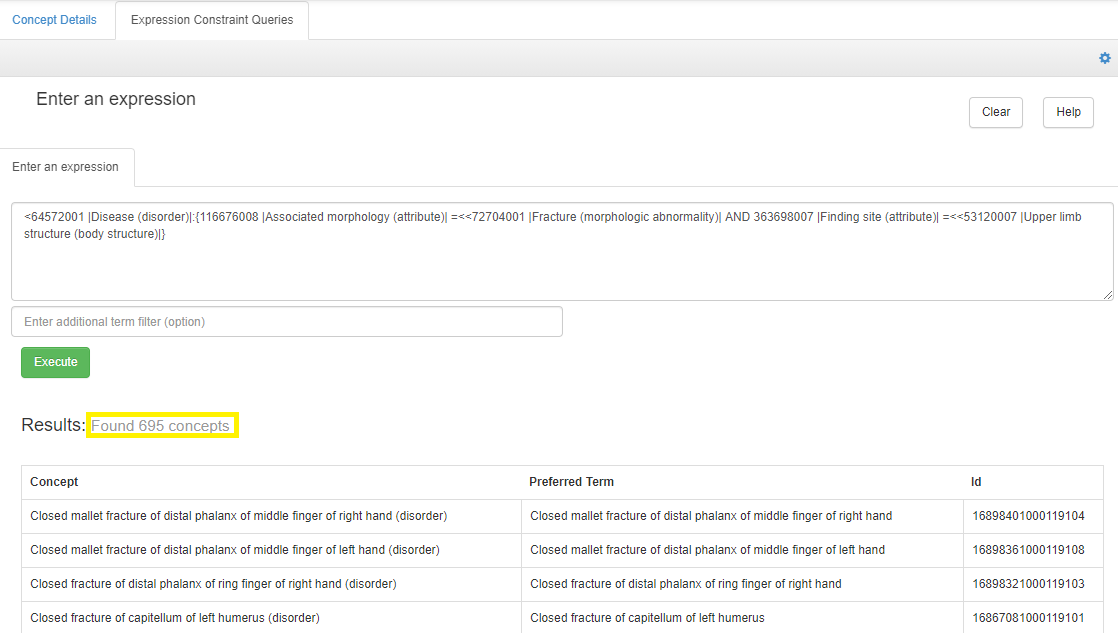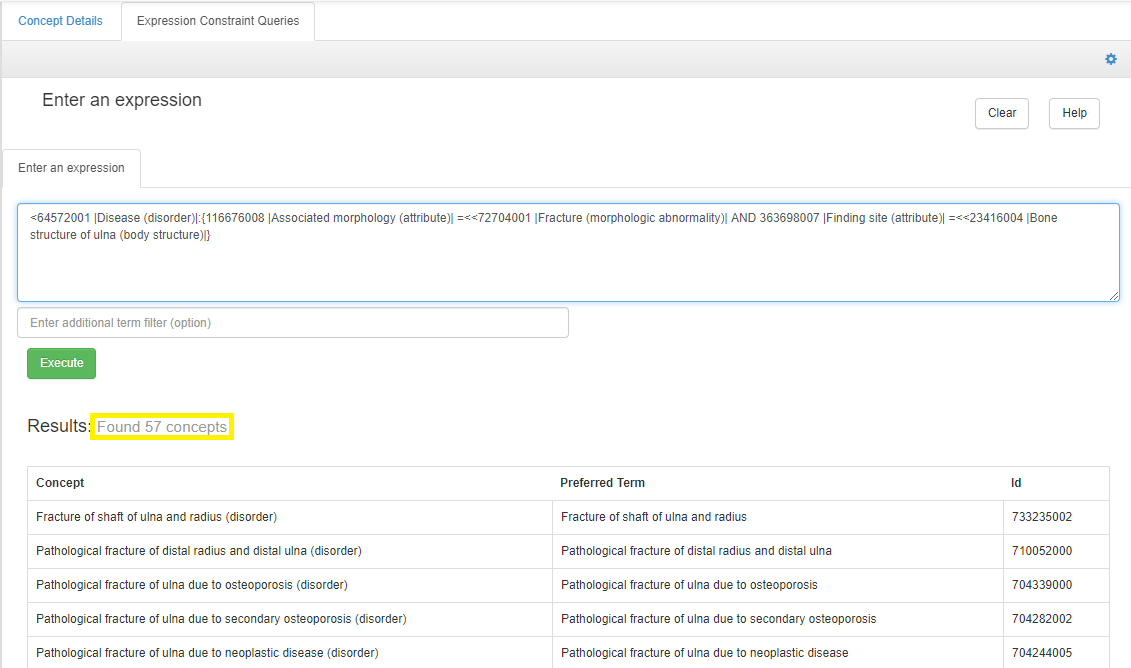The HDD has over 6000 value sets; many including SNOMED CT codes that are updated after every release. These value sets were created in an extensional manner, meaning the codes they contained were identified “manually” by subject matter experts. Since SNOMED CT is released four times a year (twice each for the international edition and the US edition), checking the value set codes against each update and making the necessary changes would require extensive time and effort to keep the value sets up to date. Instead, we leveraged the SNOMED CT hierarchy and attributes, using SQL logic and queries to result in semi automation.
Here are the take-aways for this process.
- The SNOMED CT relationships and attributes can be used to create logical rules that guide the value set definition and its mappings. The HDD team created a unique tool for this process, but SNOMED’s browser can also be used to create ECL queries achieving a similar result (see Searching in SNOMED CT® using ECL).) Here is an example of a simple ECL query to identify SNOMED CT codes that should be included in the value set “Fracture of Arm”. As you can see, it returns nearly 700 results.

- Rules can be reused and customized, which saves time and effort.The rule for the earlier example “fracture of arm” can be modified for a more specific use case like “Fracture of Ulna”, by having the finding site attribute being the more specific “bone structure of ulna”, returning 57 concepts.

- SNOMED CT is ever evolving and not all concepts are fully defined (i.e., remaining primitive), and thus cannot participate in rules. Track which value sets include primitive concepts and check each release to see if these primitive concepts are now defined and can participate in rules.
The ability to easily reuse rules allows for efficient customization and maintenance of value sets for any use case. Please contact us if you need help with value sets, or if you have questions or suggestions for future topics of discussion.

